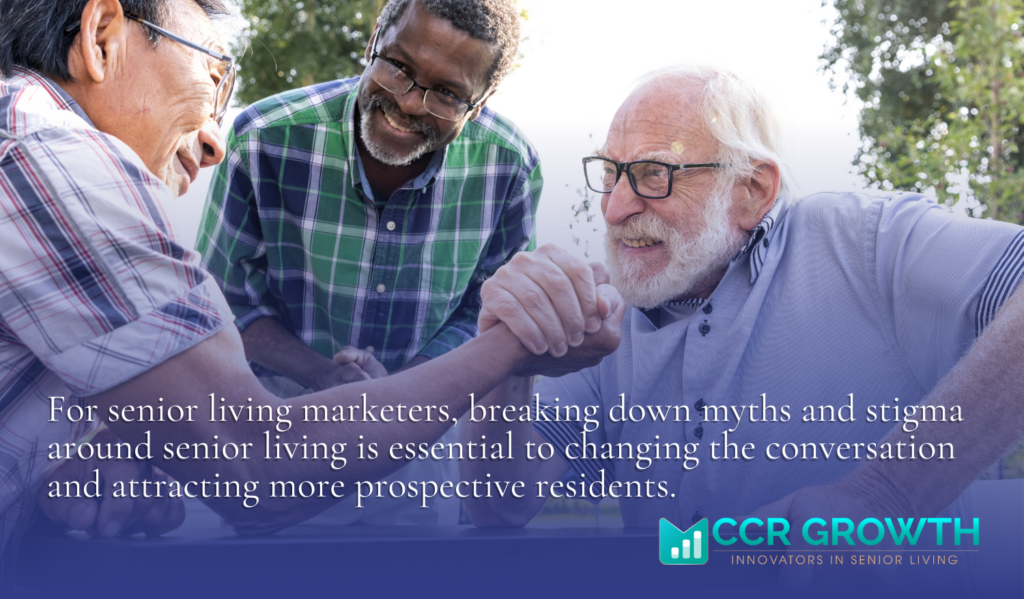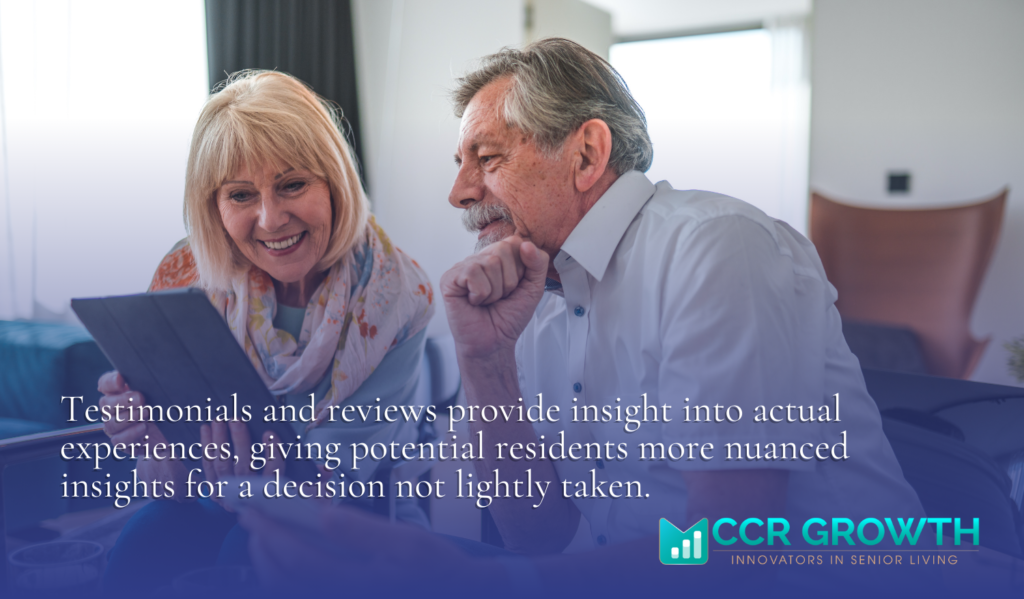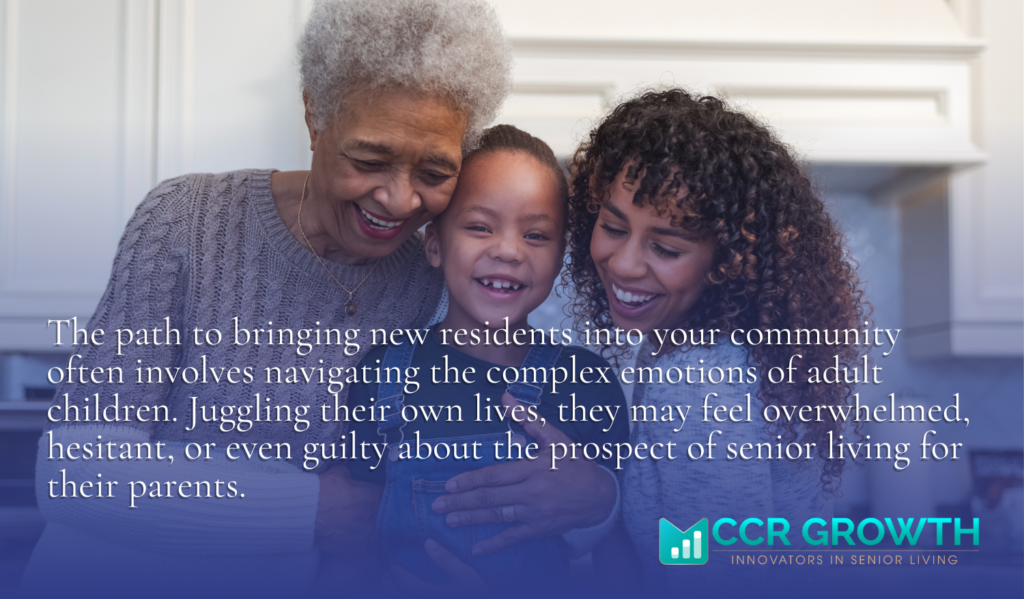
CCR Growth
Mapping the Senior Living Journey From Awareness to Action
The decision to move into a senior living community is a significant milestone, not just for older adults but for their families as well. While many wait until they need assistance with daily activities to consider senior living options, experts suggest that early planning can lead to a better transition and overall quality of life. This article explores when older adults or their families typically begin the decision-making process, how to encourage early consideration, and ways to break the lingering stigma surrounding senior living.

When Older Adults Start Considering Senior Living
Most people consider senior living when health declines. Yet, according to the Pennsylvania Health Care Association, about 70% of individuals over age 65 will require some form of long-term care in their lifetime. This statistic suggests that the need for assistance is common and, often, anticipated only when mobility or health challenges arise, making the decision urgent and emotionally charged. This reactive approach limits options and can be stressful. In episode #25 of From Leads to Leads, senior living advocate and registered nurse, Tess Quinn, reinforces this: “What I hear almost weekly is ‘I wish I would have known there was someone like you sooner.’ But it’s usually not the case, right? Something has happened to prompt the conversation.
But if, for example, someone’s in the hospital setting, with, let’s say, an injury, they’re going to require skilled nursing, short-term rehab, physical therapies and such. Instead of bringing me in when you have a discharge date in seven to 10 days, which of course I’m happy to help with, it is useful to bring me in in that hospital setting, knowing that you’re going to go to skilled care. Let’s start the conversation earlier. Let’s get one or two tours in throughout that process. So when that discharge date does come, it’s not this kind of chaotic situation. Sometimes that’s unavoidable but that would be an ideal situation.” Starting the conversation before physical or cognitive limitations develop offers both seniors and their families more time to explore the choices, prepare for the costs, and select a community that aligns with personal preferences and lifestyle.
The Collaborative Nature of the Decision
We know that senior living decisions are rarely made in isolation—they typically involve both the older adult and family members. Families often play a very important role in assessing needs, researching options, and managing financial aspects. Adult children, in particular, may guide conversations about senior living to ensure that their loved ones are well cared for as they age. However, for older adults, a sense of autonomy and involvement in the decision-making process is essential to feeling positive about the transition.
It’s vital that senior living sales teams ensure effective collaboration by utilizing open communication, empathy, and respect for the older adult’s preferences. Creating a positive narrative around senior living is a vital step. This is done by focusing on the benefits, such as enhanced social opportunities, improved health and wellness, and the peace of mind that comes with professional care and support.
Encouraging Earlier Consideration of Senior Living
Encouraging older adults to consider senior living earlier can improve their quality of life and make the transition less difficult. Your senior living marketing and sales strategies can incorporate strategic communication to support a proactive approach:
Highlight Lifestyle and Wellness Benefits
Rather than positioning senior living as a last resort, senior living providers can emphasize the proactive benefits of these communities. Many facilities offer fitness programs, social events, and opportunities to pursue hobbies and interests, which appeal to active older adults.
Incorporate Personal Values and Goals
Encourage seniors to reflect on what matters most to them—whether it’s community, wellness, or lifelong learning. When older adults see senior living as a choice that aligns with their values and goals, they are more likely to approach the idea positively.
Build Awareness Gradually
Conversations about senior living don’t need to happen all at once. A gradual, ongoing discussion can help older adults adjust to the concept over time and feel more in control of their choices. Proactively reaching out early may be the key with the simple act of connecting older adults within the wider community, a need that inspired Senior Care Academy. “[R]ather than telling a senior, ‘Get a free consultation’, we’re saying, ‘Come and learn piano for free’,” explains founder Caleb Richardson in episode #26 of From Leads to Leases.
Offer Visits to Communities
Touring senior living communities can change perceptions and reveal the vibrant, engaging lifestyle they can offer. Reluctance to consider senior living comes from outdated stereotypes, which can be challenged by experiencing the positive, welcoming environment firsthand. But it’s important to acknowledge that it’s a long journey to get an older adult or family member to take a tour. This is why building up a strong digital marketing and sales communication strategy is important. “There’s a lot they can do before even getting in-person,” observes Christie Freeze of SalesMail in episode #5 of From Leads to Leases. “I do think that there is some hesitation and resistance around being in-person. I always dealt with experiences where there were multiple family members. And so how do we get all family members involved in this process together virtually and through these types of systems and platforms that allow us to get everyone on the same page, hearing the same information.”
Breaking the Stigma Around Senior Living
 One of the biggest challenges to early consideration of senior living is the lingering stigma that these communities are solely for those who can no longer care for themselves. Overcoming this stigma requires a consistent effort to change public perception and focus on the modern senior living experience.
One of the biggest challenges to early consideration of senior living is the lingering stigma that these communities are solely for those who can no longer care for themselves. Overcoming this stigma requires a consistent effort to change public perception and focus on the modern senior living experience.
Modernize the Image of Senior Living
Today’s senior living communities offer a wide range of services and amenities tailored to different lifestyles. By showcasing senior living as a choice that enhances independence and wellness, communities can reshape how they are perceived. A game-changing strategy is to shift the mindset away from health-centric to lifestyle-centric by utilizing niche marketing. This requires identifying much smaller, more specific audience profiles and customizing marketing and sales comms to resonate specifically with them. “You have to really start asking, ‘What’s our unique selling point?’” says industry stalwart Keely Raff in episode #10 of From Leads to Leases.
Share Success Stories
Personal stories of residents who have made the choice to move early and have thrived in their new environment can be extremely impactful, helping to build social proof and credibility. These narratives can help dispel fears and demonstrate that senior living is not about giving up independence but rather enhancing it. 
Focus on Community and Purpose
Using a video-first approach to storytelling will help translate and emphasize your community’s uniqueness. Within your sales team’s communications toolbox a video-first approach helps to humanize the sales process from the start. Many offer structured social programs and opportunities for lifelong learning, which can help seniors see these communities as a space for personal growth and connection. This offers a tangible vision of what life is like in the community.
Engage Trusted Professionals
Incorporating insights from industry experts can significantly enhance the decision-making process for senior living. In her From Leads to Leases interview Tess Quinn highlighted the need to debunk myths about senior living and maintain transparency to help families understand the available options and alleviate concerns. By creating avenues for conversation, your sales teams can address questions and concerns from the outset, foster trust, and ultimately, reduce objections.
Final Thoughts
Working proactively to engage your prospects through their journey from awareness to action positions your senior living community for success. We know that the decision to move to a senior living community isn’t one that is taken lightly, and where possible, it shouldn’t have to be made under pressure. By focusing on tailored communication that works on early awareness, encourages collaboration, addresses specific concerns, builds trust, and reduces hesitation, senior living operators will ultimately lead their prospects closer to signing a lease. At CCR Growth, we’re dedicated to helping senior living communities develop the tools and strategies they need to communicate their value effectively and connect with families at the right time. If you’re looking to grow your senior living brand and support older adults in making empowered decisions, get in touch.
Subscribe to our newsletter
Sharpen your expertise and stay ahead of senior living industry trends—subscribe to CCR Growth’s newsletter for exclusive insights and updates.
Recent Posts



A Complete Guide to Generative Engine Optimization for Senior Living
Redefining Senior Living Marketing, Sales, and Operations
CONTACT ADDRESS
8710 Carmel Valley Road, Carmel, CA 93923
GENERAL INQUIRIES
info@ccrgrowth.com
(831) 273-3628
SOCIAL MEDIA





